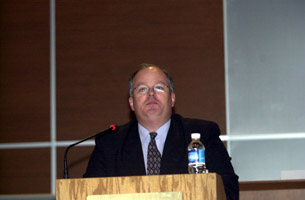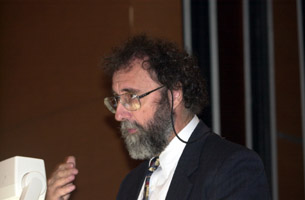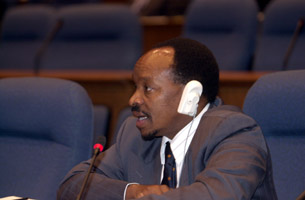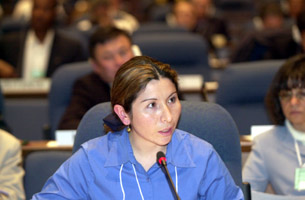|
7th
Meeting of the Subsidiary Bodies for Scientific, Technical and
Technological Advice (SBSTTA) of the Convention on Biodiversity
(CBD) |
||
|
|
||
| Highlights for Monday, 12 November 2001 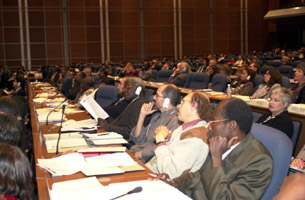 Delegates
to the seventh meeting of the Subsidiary Body for Scientific, Technical
and Technological Advice (SBSTTA) to the Convention on Biological
Diversity (CBD) met in Plenary to hear opening statements, address
organizational matters and discuss progress reports on: ad hoc technical expert groups; assessment processes; biodiversity
of dry and sub-humid lands; and sustainable use. Delegates also heard
keynote addresses on biodiversity and human health and on targets in CBD
implementation. Delegates
to the seventh meeting of the Subsidiary Body for Scientific, Technical
and Technological Advice (SBSTTA) to the Convention on Biological
Diversity (CBD) met in Plenary to hear opening statements, address
organizational matters and discuss progress reports on: ad hoc technical expert groups; assessment processes; biodiversity
of dry and sub-humid lands; and sustainable use. Delegates also heard
keynote addresses on biodiversity and human health and on targets in CBD
implementation.Above photo: Delegates during opening plenary |
. |
|
|
|||||||||||||||||||||||||||||||
|
|
||
| OPENING STATEMENTS: | ||
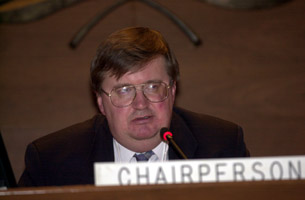 SBSTTA Chair Jan Plesnik (Czech Republic) (left) opened the meeting. He outlined the main theme of forest biodiversity, commending the work of the Ad Hoc Technical Expert Group and stressed the need for practical action. |
||
|
|
||
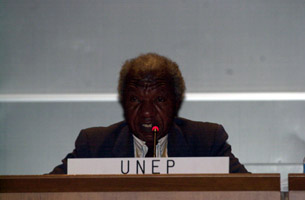 Paul Chabeda (right) on behalf of Klaus Töpfer, Executive Director of UNEP, expressed concern over a looming extinction crisis and the underlying causes of biodiversity loss and called for development of effective and implementable incentives measures. |
||
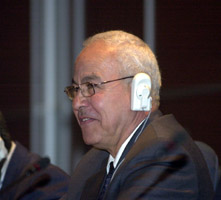 Hamdallah Zedan, CBD Executive Secretary (right), outlined recent developments including: development of the draft Bonn Guidelines on access and benefit sharing; adoption of the International Treaty on Plant Genetic Resources for Food and Agriculture; the second meeting of the Intergovernmental Committee for the Cartagena Protocol on Biosafety; and completion of guidelines for sustainable tourism in vulnerable areas. |
||
| ORGANIZATIONAL MATTERS | ||
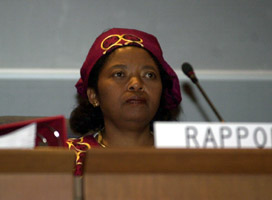 Delegates then adopted the proposed organization of work using two working groups and elected Grace Thitai (Kenya) (left) as rapporteur of the meeting and Paula Warren (New Zealand) and Lily Rodriguez (Peru) as chairs of Working Groups I and II, respectively. |
||
| KEYNOTE PRESENTATIONS: | ||
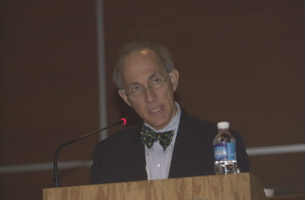 Eric Chivian, (right) Director of the Center for Health and the Global Environment at Harvard Medical School, said that the linkages between biodiversity and human health have so far been largely ignored in the CBD's work. He stressed that human life and health depend on biodiversity and that destruction of species will damage human health. |
||
|
|
||
|
REPORTS: |
||
| NEW ZEALAND reviewed the work of the Ad Hoc Technical Expert Group on Marine and Coastal Protected Areas. She noted the group's first meeting held from 22-26 October 2001, in Leigh, New Zealand. She outlined the key issues addressed in the meeting and topics for inter-sessional work. | ||
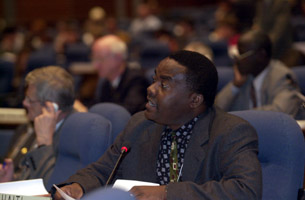 HAITI proposed that the expert group on marine and coastal protected areas address linkages with watershed management. |
||
| ASSESSMENT PROCESSES: | ||
|
|
||
| Watson, as co-chair of the Millennium Ecosystem Assessment (MA), underscored the MA's focus on ecosystem goods and services, their intrinsic value, and consequences for human well-being. | ||
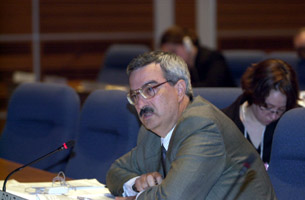 BRAZIL (right) stressed that SBSTTA should play a proactive role in promoting assessments to reduce uncertainties and called for mechanisms to involve the scientific community. |
||
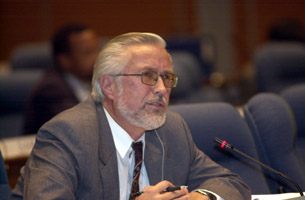 NORWAY stressed the importance of assessments' credibility and acceptance. |
||
| DRY AND SUB-HUMID LANDS: | ||
|
|
||
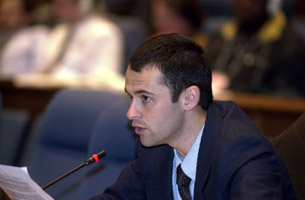 The UNFCCC Secretariat stressed the value of information sharing among the UNFCCC, the CCD and the CBD. |
||
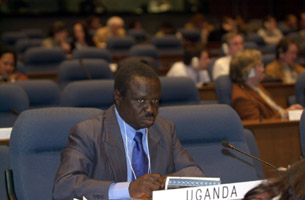 UGANDA (left) suggested prioritizing case-studies on the valuation of dryland biodiversity and noted the need to enhance capacity building for developing project proposals for GEF funding. |
||
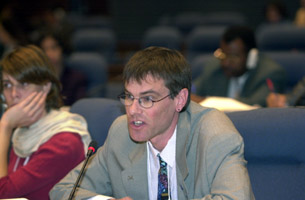 BIRDLIFE INTERNATIONAL said national processes are insufficiently linked and called for integration of national biodiversity strategies and action programmes with CCD activities. |
||
| SUSTAINABLE USE: | ||
|
|
||
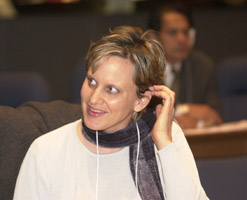 International Support Center for Sustainable Tourism stated that eco-tourism poses a danger to indigenous peoples and their homelands and expressed concerns that there was no meaningful involvement of indigenous peoples in the process of developing the guidelines. |
||
| STRATEGIC PLAN: | ||
| JAMAICA noted that, as a management tool, it was difficult to limit review to scientific or technical issues. | ||
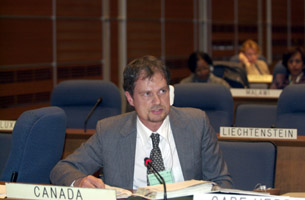 CANADA stressed the importance of information exchange, including access and benefit sharing and with NORWAY stated that SBSTTA could make significant contributions in the area of scientifically appropriate targets. |
||
| ENB CBD SBSTTA-7 SNAPHOTS: | ||
|
|
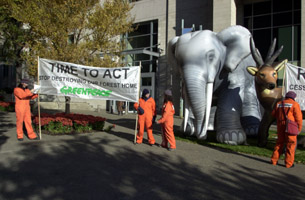
|
|
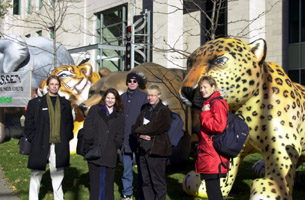
|
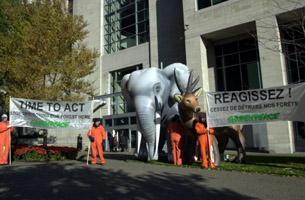
|
|
| PICTURES FROM THE RECEPTION: | ||
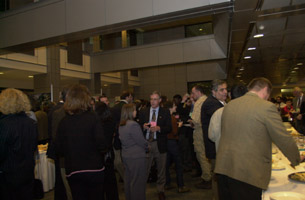
|
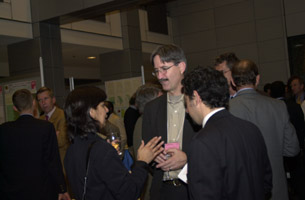
|
|
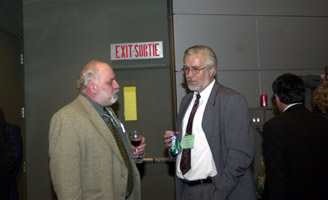
|
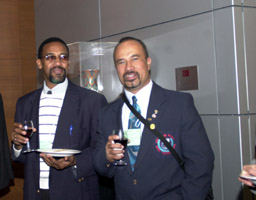
|
|
|
|
||
| © 2001, IISD. All rights reserved. |
|


